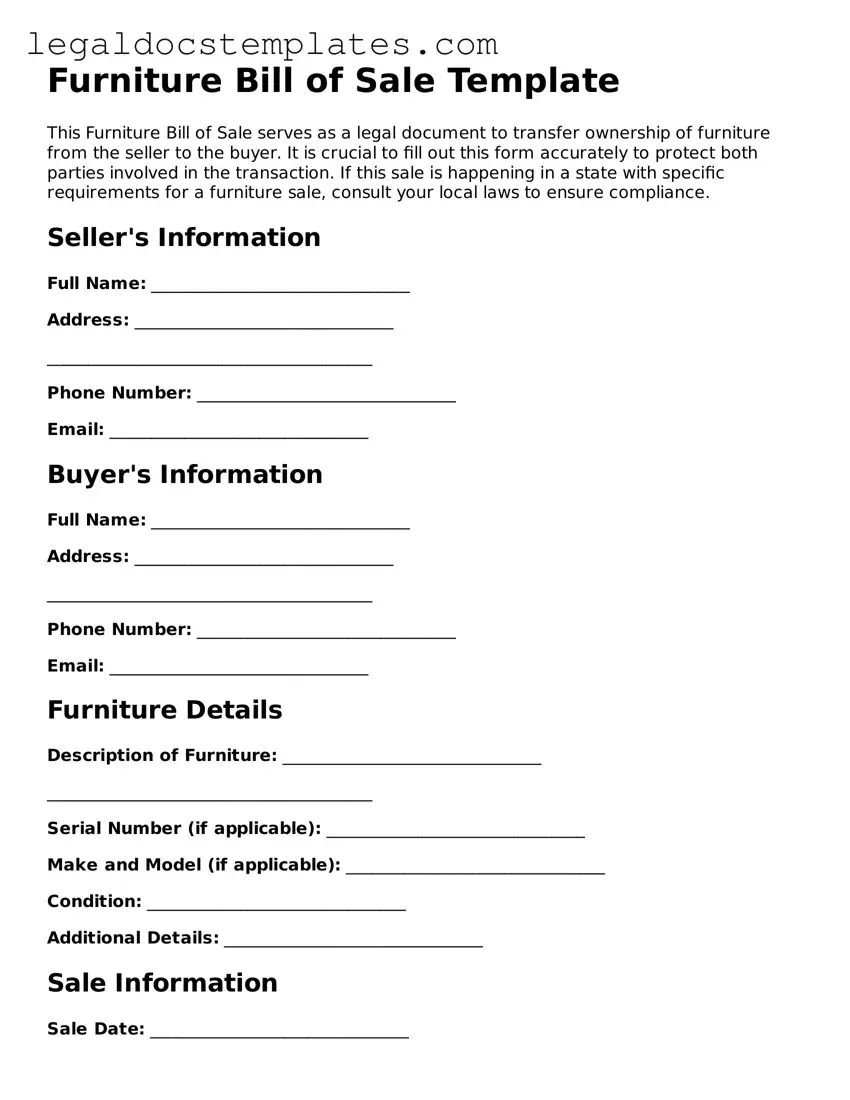Furniture Bill of Sale Template
This Furniture Bill of Sale serves as a legal document to transfer ownership of furniture from the seller to the buyer. It is crucial to fill out this form accurately to protect both parties involved in the transaction. If this sale is happening in a state with specific requirements for a furniture sale, consult your local laws to ensure compliance.
Seller's Information
Full Name: _______________________________
Address: _______________________________
_______________________________________
Phone Number: _______________________________
Email: _______________________________
Buyer's Information
Full Name: _______________________________
Address: _______________________________
_______________________________________
Phone Number: _______________________________
Email: _______________________________
Furniture Details
Description of Furniture: _______________________________
_______________________________________
Serial Number (if applicable): _______________________________
Make and Model (if applicable): _______________________________
Condition: _______________________________
Additional Details: _______________________________
Sale Information
Sale Date: _______________________________
Sale Amount: $_______________________________
Payment Method: _______________________________
- Cash
- Check
- Other: _______________________________
Additional Terms and Conditions
__________________________________________________________________________
__________________________________________________________________________
It is important that both parties agree on the terms and conditions laid out in this document to ensure a transparent and fair transaction. Any additional agreements or warranties not mentioned above should be listed here.
Signatures
Upon agreement to the terms, conditions, and the exchange detailed above, the buyer and seller should sign this document to validate the sale.
Seller's Signature: _______________________________ Date: _____________________
Buyer's Signature: _______________________________ Date: _____________________
This document serves as a receipt and legal record of the sale and purchase of the furniture described. Both parties are advised to keep a copy of this document for their records.
